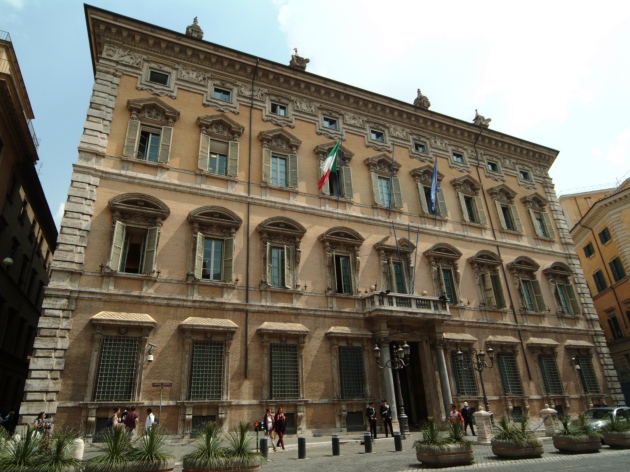
The land on which Palazzo Madama was built was ceded in 1478 by the monks of the Imperial Abbey of Farfa to France, looking for a place to host French pilgrims in Rome.
The first substantial transformation works were carried out when it came into the possession of the Medici family. Son of Lorenzo the Magnificent and future Pope Leo X, Cardinal Giovanni de 'Medici decided to buy it in 1505. The palace was restored to a project by Giuliano di Sangallo. The library of Giovanni de 'Medici was transferred there after the expulsion of the Medici from Florence.
On the death of Leo X, in 1521, Palazzo Madama was assigned to his cousin Giulio de 'Medici, who had lived there for a long time before ascending to the papal throne as Clement VII.
In 1534, the building was inherited by Alessandro de 'Medici. When he died, in 1537, it was assigned in usufruct to his wife Margaret of Austria, called the Madama (from which the building takes its name), natural daughter of Charles V and Duchess of Parma and Piacenza, who placed her residence there.
In the 17th century, considerable renovations were carried out. They gave the building its current appearance: a Baroque facade, designed by Paolo Marucelli and completed in 1642, and an interior, enriched with decorated ceilings and friezes, under the direction of Romano Monanni.
In 1737, the Grand Duke Gian Gastone died, and the Grand Duchy of Tuscany passed from the Medici to the Lorraine, and so did Palazzo Madama.
Other transformations took place under Benedict XIV, who, in 1755, bought it from the Lorraine and destined it to be the seat of the Governorate. The building was affected by further renovations: a second courtyard was opened, where today is the Aula, and the square in front of the facade was arranged by Luigi Hostini.
The Ministry of Finance was transferred in the palace during the pontificate of Pius IX, in the second half of the 19th century.
In February 1871, the building became the seat of the Senate of the Kingdom. Further renovations made it suitable for its new function.
Currently, Palazzo Madama hosts the Chamber, some parliamentary groups, the Presidency offices, and the General Secretariat, as well as some services directly connected with the parliamentary activity.
Information
The calendar of tours of Palazzo Madama is suspended.
For further information please write to visitealsenato@senato.it or call 06 6706 2177.
 Condividi
Condividi
Location
To find out about all accessibility services, visit the Rome accessible section.











































